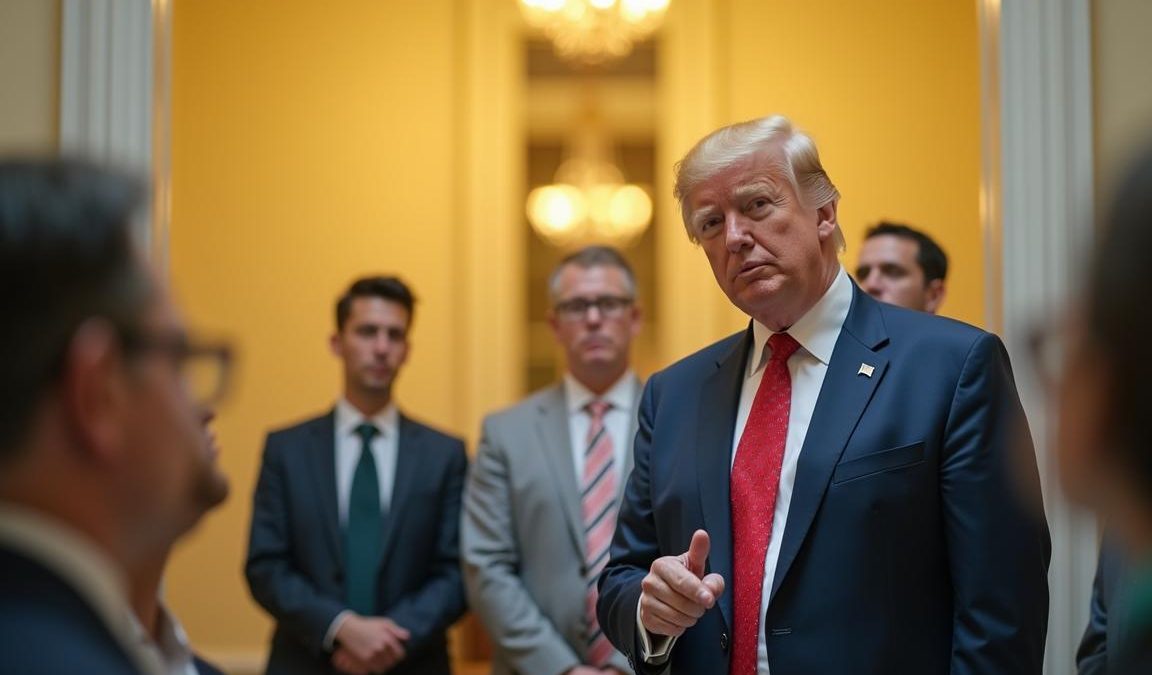Donald Trump’s presidency has always followed two key principles: projecting toughness and keeping opponents off balance.
That dynamic was on full display Monday as Trump abruptly shelved his plans for sweeping tariffs on Canada and Mexico, just as he did with Colombia the previous week.
The 25% import tariffs on America’s northern and southern neighbors were set to take effect at midnight, but Trump put them on hold, claiming to have secured crucial concessions on border security and drug enforcement.
Both Canada and Mexico announced measures to strengthen their borders, with Mexican President Claudia Sheinbaum agreeing to send 10,000 troops to curb migration and Canadian Prime Minister Justin Trudeau unveiling a new fentanyl czar and $1.3 billion in border security spending.
Trump framed the deferral as a victory, writing on Truth Social:
As President, it is my responsibility to ensure the safety of ALL Americans, and I am doing just that.
A scrutiny of Monday’s developments throws up two insights.
Firstly, Trump has shown his tariffs threats were not hollow campaign rhetoric and reinforced their role as a tool by which to negotiate non-trade terms too.
However, it also suggests the president may have backed away from a trade war that risked severe economic damage.
Trump tariff not rhetoric but market reaction delivers a reality check
While he has delayed the imposition of tariffs by a month for Canada and Mexico, buying concessions that he was looking for, experts say the move has nonetheless driven home his seriousness about using tariffs as a tool.
“Leaders need to understand that Trump is serious,” said Heritage Foundation research fellow EJ Antoni in a NBC report.
If they dismiss his actions as mere bluster or campaign promises, nothing will change. They must recognize his intent.
However, a paradox exists.
On Friday last week, a day before signing an order to slap tariffs, Trump had vowed that there was nothing Canada or Mexico could do to stop the economic penalties.
“No, no. Not right now, no,” Trump said when asked if there was any opportunity at this stage for the three top US trading partners to win a delay.
But his reversal followed a sharp market selloff on Monday morning, as investors weighed the potential consequences of a full-blown North American trade war.
Analysts warned that the price of new cars could jump by $3,000 due to supply chain disruptions. Grocery prices, a major concern for voters, were expected to surge.
These concerns came to be especially significant given that Trump campaigned on reducing costs and curbing inflation.
If fully implemented, his proposed tariffs could reduce American households’ purchasing power by $1,000 to $1,200 per year, according to the Budget Lab at Yale University.
These economic realities seemed to force Trump’s hand, despite his earlier hardline stance.
Did Canada and Mexico actually concede much?
Also, while Trump touted the deals as a triumph, the actual concessions from Canada and Mexico were relatively modest.
Mexico has previously deployed troops to the border, including in April 2021 when President Joe Biden made a similar request—without needing tariff threats.
Canada’s $1.3 billion border security plan had already been proposed back in December, making it less of a major concession than Trump suggested.
By backing down, Trump reinforced perceptions that his trade threats are more of a negotiating tactic than a firm policy stance.
This could weaken his leverage in future negotiations.
China’s response to tariffs and scope of a similar deal
While Mexico and Canada have been temporarily reprieved, Trump is yet to speak to China’s president Xi Jinping even as the the country has already unveiled a slew of retaliatory tariffs against the US on Tuesday.
China unveiled tariffs of between 10 and 15% on US liquefied natural gas, coal, crude oil, and farm equipment, saying they would take effect on February 10.
Beijing also said it would impose tariffs on some car exports from the US and announced additional export controls on rare metals.
Hours before Beijing unveiled its measures, Trump had described his imposition of a 10% extra tariff on China as an “opening salvo” in his renewed trade offensive against the world’s second-largest economy.
Trump is expected to speak to China’s President Xi Jinping in the coming days, prompting hopes that the leaders will be able to hammer out a deal to avert a full-blown trade war.
Economists remain doubtful.
“The likelihood of [an] agreement to avoid tariffs appears limited,” said Robin Xing, chief China economist at Morgan Stanley in a report by FT.
“Paths to de-escalation . . . remain narrow and would require significant compromises from both sides,” he said.
What happens next?
Trump’s unpredictable approach to trade has again highlighted the volatile nature of US foreign policy under his leadership.
While he argues that tough talk secures better deals, the constant threats and last-minute reversals have raised doubts about America’s reliability as a trade partner.
Charu Chanana, chief investment strategist for Saxo Markets, summed up the uncertainty ahead:
“Even if negotiations are reached, uncertainty will remain high, and we will be discussing tariffs for the coming weeks and months,” she said in a Bloomberg report.
For businesses and markets, that uncertainty could be just as damaging as the tariffs themselves.
The post Trump’s pause on tariffs on Mexico and Canada: a win or a retreat? appeared first on Invezz

